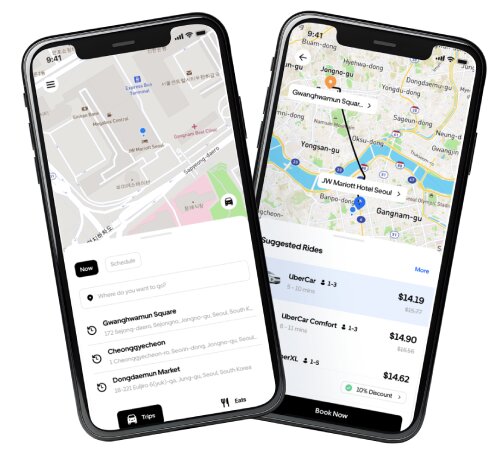In the dynamic world of on-demand services, creating an Uber clone app can be a lucrative venture. However, building a successful ride-hailing app requires meticulous planning, robust development, and strategic execution. This guide will walk you through the essential steps to develop a compelling Uber clone app that stands out in the competitive market.
Understanding the Market and Identifying Your Niche
Before diving into the development process, it’s crucial to conduct thorough market research. Analyze the existing ride-hailing market, identify key players, and understand their strengths and weaknesses. Determine your target audience and identify any gaps or opportunities in the current market. This will help you define your unique selling proposition (USP) and tailor your app to meet specific user needs.
Key Considerations:
- Competitor Analysis: Study apps like Uber, Lyft, and local alternatives to understand their features and business models.
- Target Audience: Identify the demographics and preferences of your potential users.
- Market Gaps: Look for unmet needs or areas where current apps fall short.
Defining Essential Features for Your Uber Clone App
A successful Uber clone app must include a set of core features that ensure a seamless user experience for both passengers and drivers. These features form the backbone of your app and are essential for its functionality and user satisfaction.
Core Features:
- User Registration and Profile Management: Allow users to sign up, create profiles, and manage their information.
- Real-Time GPS Tracking: Enable users to track drivers in real-time and get accurate ETA.
- Ride Booking and Scheduling: Offer options for instant booking and future ride scheduling.
- Payment Integration: Integrate multiple payment gateways for smooth transactions.
- Rating and Review System: Allow passengers and drivers to rate and review each other.
- Push Notifications: Keep users informed with updates on ride status, promotions, and important messages.
- In-App Chat and Support: Provide a communication channel between drivers and passengers and offer customer support.
Choosing the Right Technology Stack
Selecting the appropriate technology stack is critical for the performance and scalability of your Uber clone app. The choice of technology should align with your app’s requirements and future growth plans.
Recommended Technology Stack:
- Frontend: React Native or Flutter for cross-platform mobile app development.
- Backend: Node.js or Ruby on Rails for server-side operations.
- Database: MongoDB or PostgreSQL for efficient data management.
- Real-Time Tracking: Google Maps API or Mapbox for location services.
- Payment Integration: Stripe, PayPal, or Braintree for secure transactions.
- Push Notifications: Firebase Cloud Messaging (FCM) for reliable notifications.
Designing an Intuitive User Interface
A user-friendly interface is vital for the success of your app. The design should be intuitive, responsive, and visually appealing to ensure a positive user experience. Focus on simplicity and ease of navigation to keep users engaged and satisfied.
Design Principles:
- Simplicity: Keep the design clean and uncluttered.
- Consistency: Ensure a consistent look and feel across all screens.
- Responsiveness: Optimize the app for different devices and screen sizes.
- Accessibility: Make the app accessible to users with disabilities.
Developing the App: A Step-by-Step Approach
The development process involves several stages, from initial planning to final deployment. Each stage requires careful execution to ensure the app’s functionality, performance, and security.
Development Stages:
- Planning: Define the app’s requirements, features, and timeline.
- Prototyping: Create wireframes and prototypes to visualize the app’s design and flow.
- Development: Code the frontend and backend components and integrate necessary APIs.
- Testing: Conduct thorough testing to identify and fix bugs, and ensure the app runs smoothly.
- Deployment: Launch the app on app stores and monitor its performance.
- Maintenance: Provide regular updates and support to keep the app running efficiently.
Implementing Effective Marketing Strategies
Launching your app is just the beginning. To attract and retain users, you need to implement effective marketing strategies. Promote your app through various channels and continuously engage with your audience to build a loyal user base.
Marketing Tactics:
- Social Media Marketing: Leverage platforms like Facebook, Instagram, and Twitter to reach potential users.
- Content Marketing: Create engaging content such as blogs, videos, and infographics to promote your app.
- Paid Advertising: Invest in paid ads on Google, social media, and other platforms to boost visibility.
- Referral Programs: Encourage users to invite friends and family by offering incentives.
Ensuring Compliance and Security
Compliance with legal regulations and ensuring the security of user data are paramount. Make sure your app adheres to relevant laws and industry standards to build trust and protect your users.
Key Areas:
- Data Privacy: Implement robust data protection measures and comply with GDPR or other relevant regulations.
- Legal Agreements: Include terms of service, privacy policy, and disclaimers in your app.
- Security: Use encryption and other security protocols to safeguard user data and transactions.
Continuous Improvement and Scaling
The journey doesn’t end with the launch. Continuously gather feedback from users, monitor the app’s performance, and make necessary improvements. Plan for scaling your app to accommodate growth and expand your services.
Continuous Improvement Strategies:
- User Feedback: Regularly collect and analyze feedback to identify areas for improvement.
- Performance Monitoring: Use analytics tools to monitor app performance and user behavior.
- Feature Updates: Keep your app fresh by adding new features and enhancements based on user needs.
- Scalability: Plan for infrastructure scalability to handle increased user load and geographic expansion.
Conclusion
Developing a successful clone app requires careful planning, strategic execution, and ongoing improvement. By understanding the market, defining essential features, choosing the right technology, and implementing effective marketing strategies, you can create an app that stands out in the competitive ride-hailing market. Focus on delivering a seamless user experience, ensuring compliance and security, and continuously improving your app to achieve long-term success.

